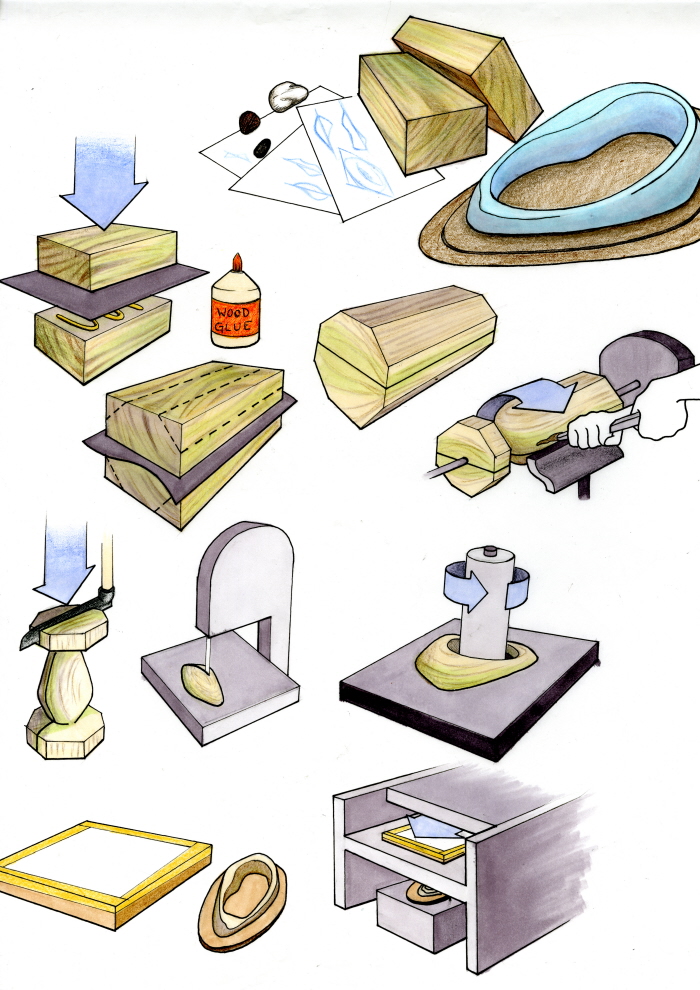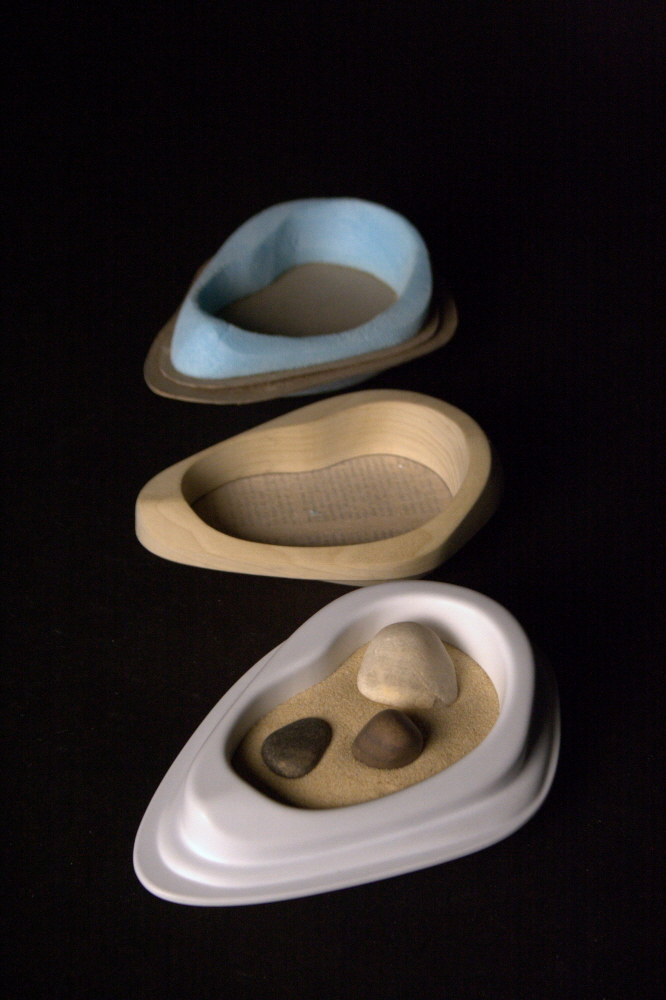


Like most of my work, the Rotoform Rock Vessel began as sketches that were then translated to foam models. Every foam model helped me think through the process of creating the vessel, and helped tweak and refine the final form.

Illustration showing the process of making the Rotoform Rock Vessel; all the way from sketches and foam models to a final vacuum thermoformed vessel.

Final concept drawing.








As a complimentary step to the Rotoform project, I created synthetic rocks out of REN shape that represent an idealized version of the original rock family I chose for the Rotoform project. As shown here, I went through several chavant clay iterations before deciding on final forms that best complimented the vessel's form.



gLike